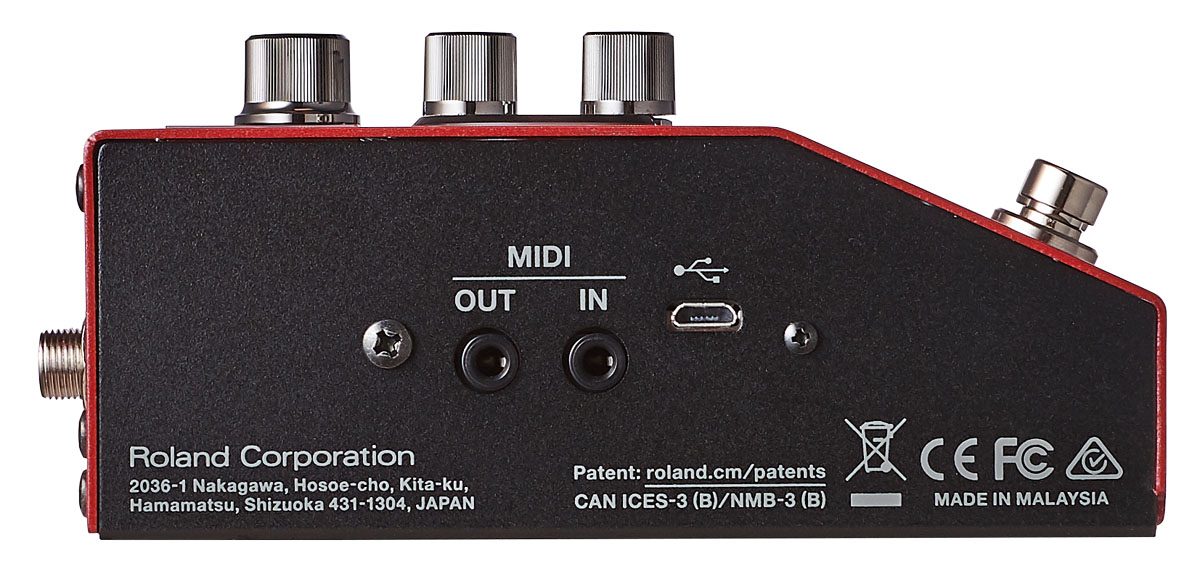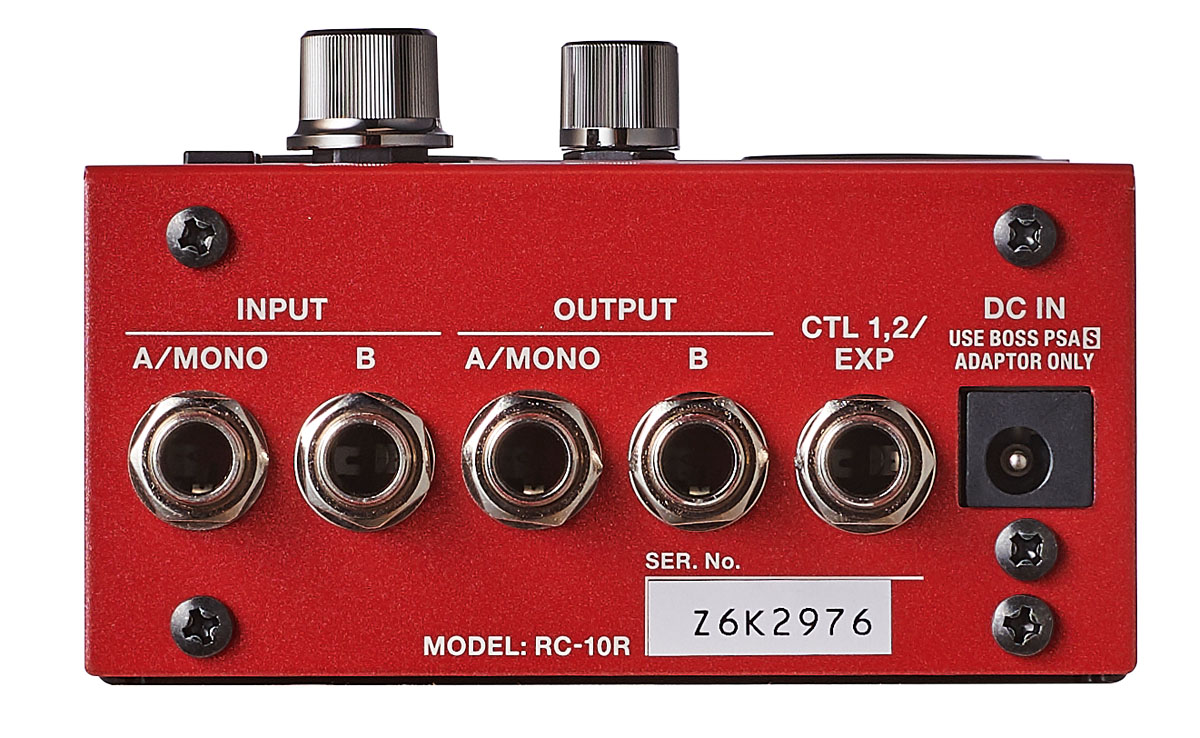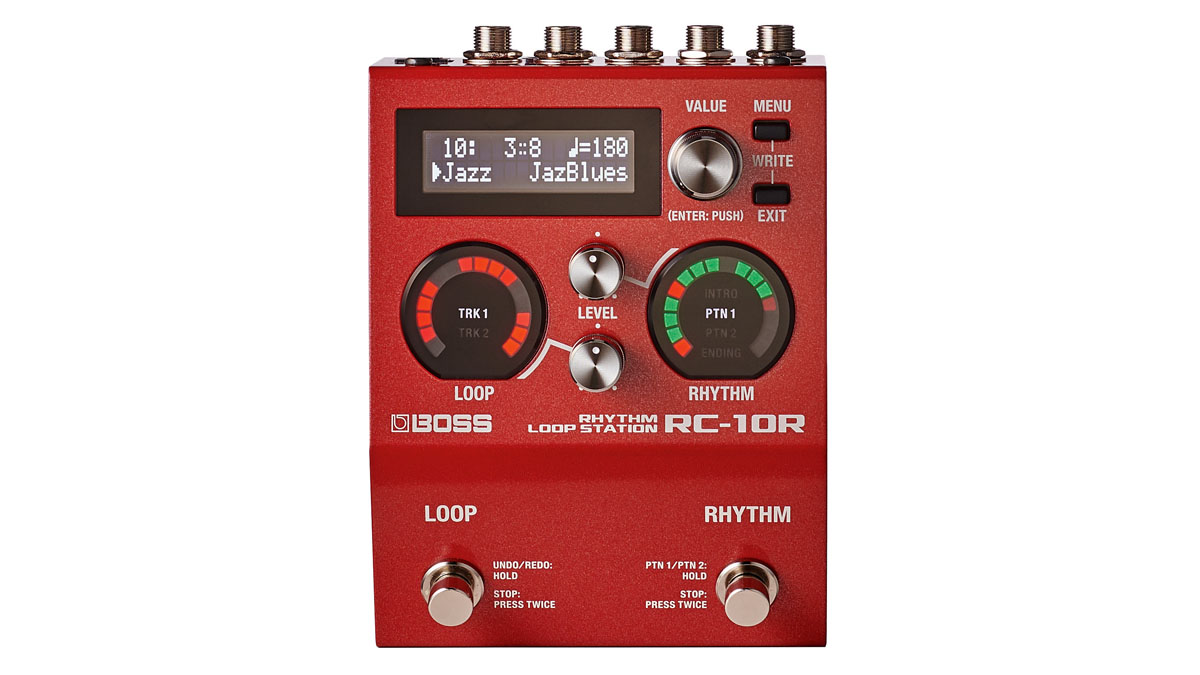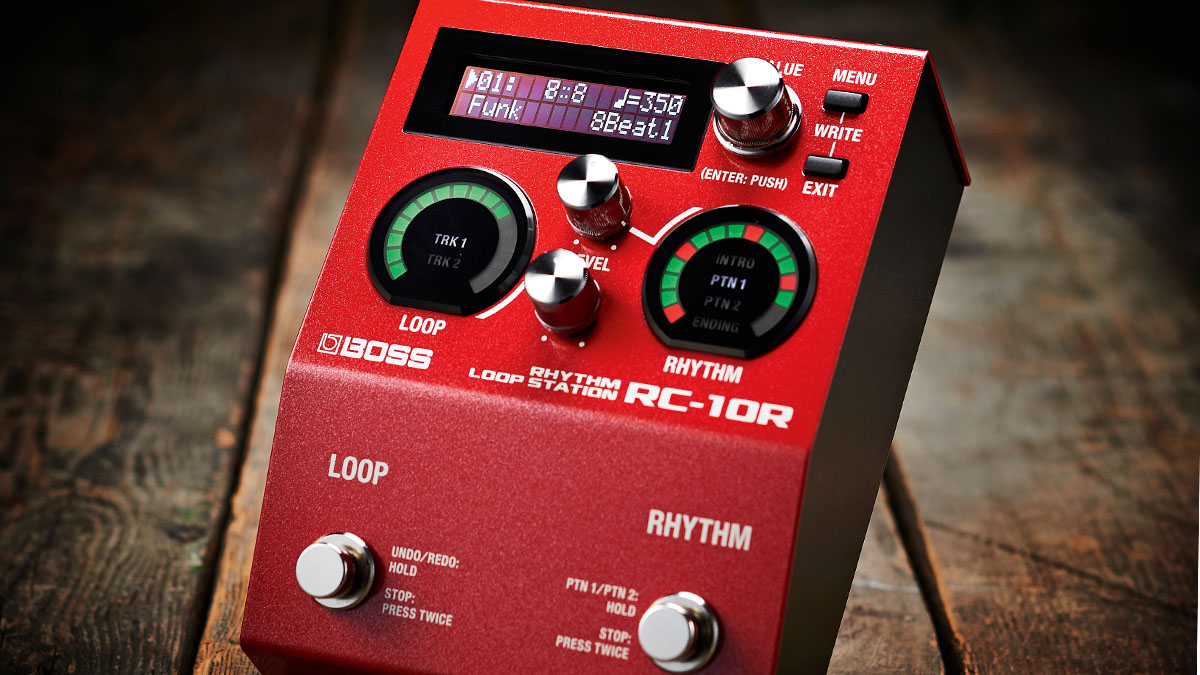Guitar World Verdict
Boss has created a truly inspiring and intuitive creative tool – a quasi-hybrid looper-cum-drum machine that could supercharge solo performances or the writing process alike.
Pros
- +
The rhythms are excellent and there are a lot of them.
- +
Very easy to use.
- +
You can instantly switch between song sections.
- +
The visual loop indicators let you know what's going on.
Cons
- -
No headphone output.
- -
Buskers might curse the lack of battery power.
You can trust Guitar World
In case you were wondering, the ‘R’ suffix in Boss's new looping unit designations is an R for rhythm, which each of these units featuring built-in rhythm generator to extend the usefulness of the looper.
Units such as the RC-3 and RC-30 have onboard rhythm patterns. But the RC-10R is altogether more sophisticated when it comes to the rhythm department. It's really something of a hybrid unit – a looper pedal crossed with a drum machine.
- Fill up that pedalboard with the best chorus pedals
- Get a bit filthy with the best distortion pedals
- Need a bit of space? Take a peek at the best reverb pedals
Here you have 280 preset rhythms that cover a wide variety of musical genres, each including two unique sections (Pattern 1 and Pattern 2) with transition fills, an intro and an ending.
There’s also onboard storage space for 50 imported user rhythms in SMF (Standard MIDI File) format. Simply create them on your computer and download them to the RC-10R. You can choose from 16 onboard drum kits to play your rhythm patterns back, each with sounds culled from Boss and Roland's rhythm libraries.
For the actual business of looping – with drums or without – there’s a stereo looper with two independent tracks, offering a generous six hours of recording time. You have 99 onboard memories for storing phrases.
In Use
The RC-10R has a familiar look, and is occupies the same chassis as the Boss 200 series pedals. As such, it has two footswitches – one for looping and one for rhythm and both easy to access
There is true stereo in/out operation if you need it, but you can also choose to send your loops and rhythms through the L and R outputs to separate destinations – rhythms to a PA, for instance, and your loops to your guitar amp.
Should you choose to send both loops and rhythms to your guitar amp there are a number of filtering/EQ options that will come in very handy for shaping your rhythm tracks. Similarly, you can apply some tweaks no matter where you choose to send the rhythm signal.
The front panel couldn't be more simple. Here you have separate volume knobs and high-viz rotary LED displays for your loops and rhythm patterns. Positioned beside these you'll find one pair of buttons and a press-and-turn encoder knob for adjusting parameters display panel. The display is small but it is bright and clear.

Using the rhythm patterns is easy. Select a genre – funk, rock, and so on – then choose a named rhythm pattern under that category and set the tempo in bpm. When you hit the footswitch, the unit will play an intro then the basic pattern; hold the footswitch down and the unit changes to a second, and typically busier, variation on the rhythm (Pattern 2).
The fills are automatically inserted as you transition between the patterns but if the situation arises, throw in your own fill at any time by hitting the footswitch once.
Some of these patterns are really great, and will really entice you to play along: extremely practical if you need to hone your timing, and excellent for creativity and sparking new musical ideas.
The kits are easily changed for another and you can adjust the reverb on it, too. If you don’t like the sound of the kit that comes as the default with a pattern, simply swap it out.

To get started with looping, choose free memory slot and with single presses taking you through either a record/overdub/play cycle or a record/play/overdub cycle, it's time to get started. Hold the switch to undo and redo loops; press it twice to stop.
There are two tracks available, so the option is there to record two different song sections. To play these serially, switch between Track 1 and Track 2 hold down the Rhythm switch and hit the Loop switch.
Now, all of the above has rhythm and loops operating separately. Using them simultaneously calls for the SYNC mode, allowing you to initiate loop recording by setting the rhythm, then having the looper change to Track 2 when the rhythm changes to Pattern 2.
This is great for looping newbies, and dead easy for those upgrading from a more basic loop station. Expand your control options with external footswitches, such as an expression pedal (which take on a number of roles). Alternatively, you can use MIDI.
Verdict
The RC-10R is an inspirational tool for practice and songwriting. The rhythms will help get your creativity going and will stretch your playing, especially with regards timing. The RC-10R is also excellent for live performance, too. Even if you don't use the rhythms, as a looper it is very impressive, and operates just as those in the Boss compact models.
But then the rhythms can come in handy live, especially for a solo performer who needs a bigger sound. With the facility to load your own, plus ready access to tailor-made backing tracks, it is an altogether impressive package.
Specs

- PRICE: $299.99 / £263
- ORIGIN: Malaysia
- TYPE: Looper pedal
- FEATURES: Buffered bypass, maximum recording time: approx. 6hrs (stereo), 99 phrase memory slots
- DRUM KITS: Studio, Live, Light, Heavy, Rock, Metal, Jazz, Brushes, Cajon, Drum&Bs, R&B, Dance, Techno, Dance Beats, Hiphop, 808+909
- CONTROLS: Value, Loop Level, Rhythm Level, Menu switch, Exit switch, Loop footswitch, Rhythm footswitch
- CONNECTIONS: Standard inputs (A/Mono, B), standard outputs (A/Mono, B), CTL 1, 2/EXP, MIDI In, MIDI Out, USB
- POWER: Supplied 9V DC adaptor 250mA
- DIMENSIONS: 101 (w) x 138 (d) x 65mm (h)
- CONTACT: Boss
Trevor Curwen has played guitar for several decades – he's also mimed it on the UK's Top of the Pops. Much of his working life, though, has been spent behind the mixing desk, during which time he has built up a solid collection of the guitars, amps and pedals needed to cover just about any studio session. He writes pedal reviews for Guitarist and has contributed to Total Guitar, MusicRadar and Future Music among others.
“The original Jordan Boss Tone was probably used by four out of five garage bands in the late ’60s”: Unpacking the gnarly magic of the Jordan Boss Tone – an actual guitar plug-in that delivers Dan Auerbach-approved fuzz
“This is a powerhouse of a stompbox that manages to keep things simple while offering endless inspiration”: Strymon EC-1 Single Head dTape Echo pedal review













